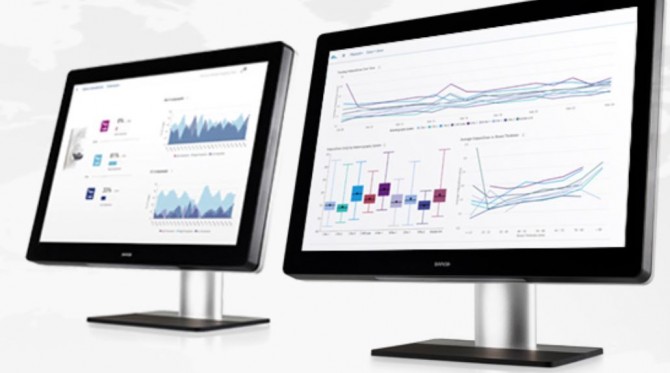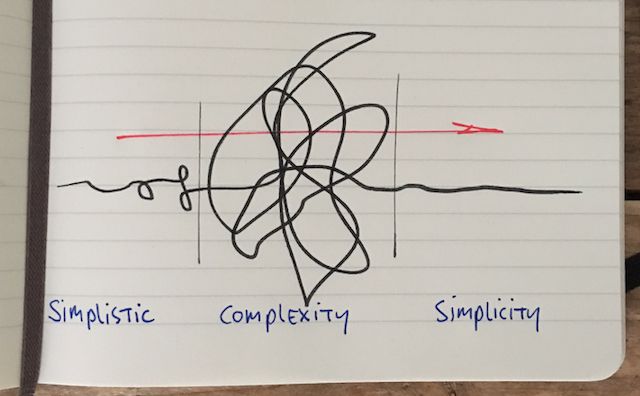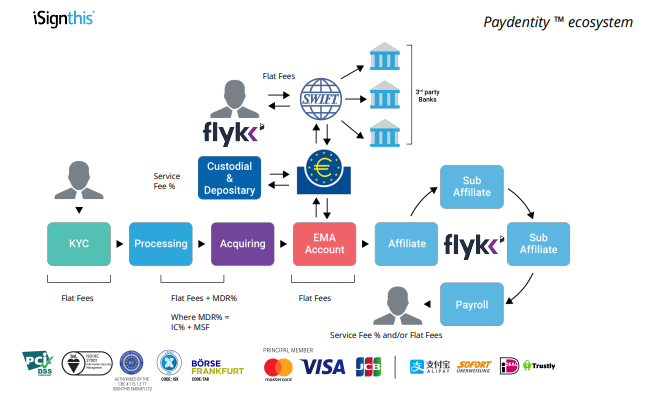
A lot of investors seem to be pivoting their investment strategies in light of the coronavirus crisis. Mine, for better or worse, remains essentially unchanged:
- Seek to acquire a range of quality companies with a view to holding them for many years.
- Aim to hold between 10-15 companies that do not have highly correlated risks.
- A quality company is one that operates in an attractive industry and that I expect to grow at or above the industry average over the cycle. Ideally, it has (or is building) a durable competitive advantage, is run by aligned and capable management and has a strong balance sheet. Importantly, it must be a business I can understand.
- Buy and hold these companies so long as the market price is reasonable based on a conservative and well founded estimate of value. However, understand that my estimate of value will be rough, at best, and therefore always apply a sensible margin of safety.
- Weight companies in my portfolio according to a combination of conviction and discount to fair value.
- Journal my investment thesis for each holding (using Strawman of course!) and review regularly. Also, understand the bear case and take it seriously.
- Try to approach share market volatility with equanimity, but be a decisive seller if an investment thesis is broken.
- Trade as infrequently as possible and be patient. Compounding takes time to work its magic.
At a high level, that’s about it.
To be clear, I’m not suggesting that this is what you should do. But it works for me.
Of course, this strategy hasn’t helped me avoid the havoc wrought by the coronavirus. My portfolio is well down from where it was in January. It sucks.
That being said, I have little concern as to whether most of my companies will be able to endure the huge economic dislocation most experts are anticipating. Their earnings will all be hit, some worse than others, but I expect them to be around — and prospering — a few years down the track.
I’m fortunate, too, in that I entered into this crisis with a fairly large cash weighting (proportionally speaking). Again, that wasn’t due to any great precience on my part, but rather a reflection of the fact that over the past year or two I was finding it increasingly difficult to justify many of my holdings, especially as some big winners came to dominate the weightings. Although I still liked most of these companies, their market valuations were becoming very unrealistic in my view (eg ProMedicus).
A good problem to have, to be sure, but combined with a lack of high conviction ideas I just ended up with a large cash weighting.
Although that sounds very fortuitous, I’m not bragging. The reality is that this meant I had far less exposure to the market when it was surging ahead last year. Losses are painful, but there’s a special kind of pain that comes from watching sold shares continue to rally.
Frankly, despite the recent falls, I’d probably be much better off today if I was less hasty in my selling.
At any rate, timing is simply not a feature of my strategy (I just can’t do it and, frankly, I don’t think most others can either). I know I’ll often buy too early and sell too late (or vise versa), but that doesn’t matter. As far as I am concerned, real wealth creation is not about deftly trading in and out of markets; it’s about owning attractive assets that can deliver long-term, compounding returns.
Which brings us back to the current situation.
What’s changed?
As I said, my strategy has not changed. But the environment sure has.
The opportunity set has grown much larger and, while extremely sensitive to the very real and significant social and economic impacts the coronavirus will bring, I’m very mindful of Winston Churchill’s aphorism: never let a good crisis go to waste.
If I’m genuine in my long-term horizon and agnosticism towards timing, there’s a good argument to start putting my cash to work immediately. There’s more than a few interesting prospects out there right now that are trading at attractive prices — even if they do go a lot lower in the interim.
Consider this; if you’d purchased shares in Flight Centre (ASX:FLT) after they’d already fallen 50% in the GFC, you would have had to endure a further 70% loss and wait many years before your investment bore any real fruit. But that was some sweet and juicy fruit — by 2014 your investment would have delivered a market thrashing 194% total return over the period.
(Let me stress: I’m not trying to draw any parallels with what happened to Flight Centre then with what might happen now. The situations are very different, and I’m not buying at present. It’s just to illustrate the point that your timing can totally suck, but if you buy the right stock and have enough patience, you can still do extremely well.)
Still, although I may eventually be happy in buying now, if I am being honest, there’s an inner hubris that makes me think now is not the time to act. Things could get worse, and stay worse, for a long time.
In another article I suggested the smart way to handle this dilemma was to divide your investable capital into five discrete chunks and commit to putting each to work at regular intervals over the coming year. I still think that’s the lowest risk way to ‘play’ this, as although you’ll still miss the bottom, you’ll likely get a very decent average.
Back to our Flight Centre example. If you’d employed a dollar cost averaging strategy as shares really began to fall you would have achieved a better average buy price and, consequently, a much higher total return.
It’s worth noting that in this example, three out of the five purchases were at a worse price than under the first assumption. It’s just that at the lower prices, you get a lot more shares for the same dollar investment.
That’s why dollar cost averaging works so well.
Also note that even at the best purchase price, shares still dropped a further 30% before they bottomed out. Today that feels very abstract, but that would have been a brutal period to endure psychologically. At the bear market nadir, you would be sitting on a 67% loss, with all your ammunition spent. Not a happy place.
Again, this is all just to illustrate a point. I could have used any number of different companies to draw the same basic lesson (provided they returned to growth after the GFC, which reinforces the importance of also focusing on quality).
So anyway, that’s basically how I intend to operate over the next 12 months. You can visit my Strawman profile if you want to follow along. When the new version is finally released (soon, I promise!), you’ll be able to see the exact weightings and cash balance.
When it comes to my shares, there’s a lot of work to do in testing previous assumptions and potentially re-examining valuations. But that’s not the hardest part.
The real test will be one of patience and emotional fortitude.
The near-term outlook
Like I say, I don’t have any clear view as to how the market will play out over the coming 12 months. But, for better or worse, I want to lay out my current thinking in terms of the big picture.
Needless to say, in such a rapidly changing environment this could well prove laughable when we look back in a year or two. Maybe even next week. But I think it’s important to keep an investment diary to properly keep track of your thoughts. As always, I’ll continue to update my thinking as and when new information comes to light, or if I find a better interpretation of the known facts.
Based on everything I’ve been reading, here’s my take:
- If they haven’t already, most countries will need to enact strict travel and social distancing policies. Even if introduced quickly and effectively, this will have a massive impact on the real economy.
- For several economically important countries, the response to date has been woefully inadequate. However, things could still improve significantly if efforts are improved.
- The pandemic could last for at least 6 months. Maybe 12 months. After that, most of the population will have acquired and recovered from the virus, and remaining pockets of infection will be effectively dealt with. Strict control policies will start to be relaxed.
- In the meantime, although exact infection, admission and mortality rates can be debated, the social cost will be significant and tragic.
- It will likely place health systems under an incredible strain. Many places will reach breaking point.
- A recession seems inevitable, as does a rise in unemployment.
- Over the coming months businesses and households will be severely tested. Of those that do emerge, many will do so in a much weaker position.
- We are entering this crisis with record household debt and an inflated property market.
- Once the medical crisis begins to subside — and it will — there’s no guarantee of a rapid economic rebound.
- Governments around the world will introduce significant stimulus packages.
- The same issues that helped drive markets higher after the GFC — loads of liquidity, near zero rates and fiscal stimulus — are still a factor.
- Markets are always looking forwards. I suspect once there’s any glimmer of light at the end of the tunnel, the “fear discount” could quickly dry up, even though a return to previous highs could take many years.
And, of course, any number of unpredictable events could still come out of left field and turn everything upside down again.
If you have a different perspective, overall or just in part, please share it on our forums. As Ray Dalio says, I just want to be right—I don’t care if the right answer comes from me.
Stay safe, and good luck to all.
Strawman is Australia’s premier online investment club. Join for free to access independent & actionable recommendations from proven private investors.
Disclaimer– The author may hold positions in the stocks mentioned in this publication, at the time of writing. The information contained in the publication and the links shared are general in nature and does not take into account your personal situation. You should consider whether the information is appropriate to your needs, and where appropriate, seek professional advice from a financial adviser. For errors that warrant correction please contact the editor at [email protected].
© 2020 Strawman Pty Ltd. All rights reserved.
| Privacy Policy | Terms of Service | Financial Services Guide |
ACN: 610 908 211







